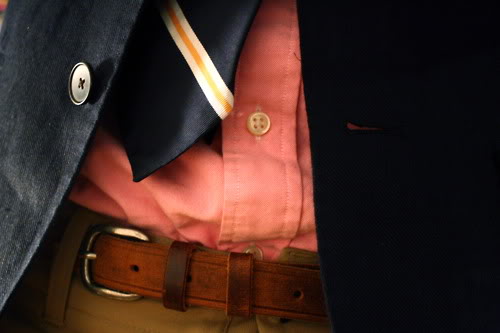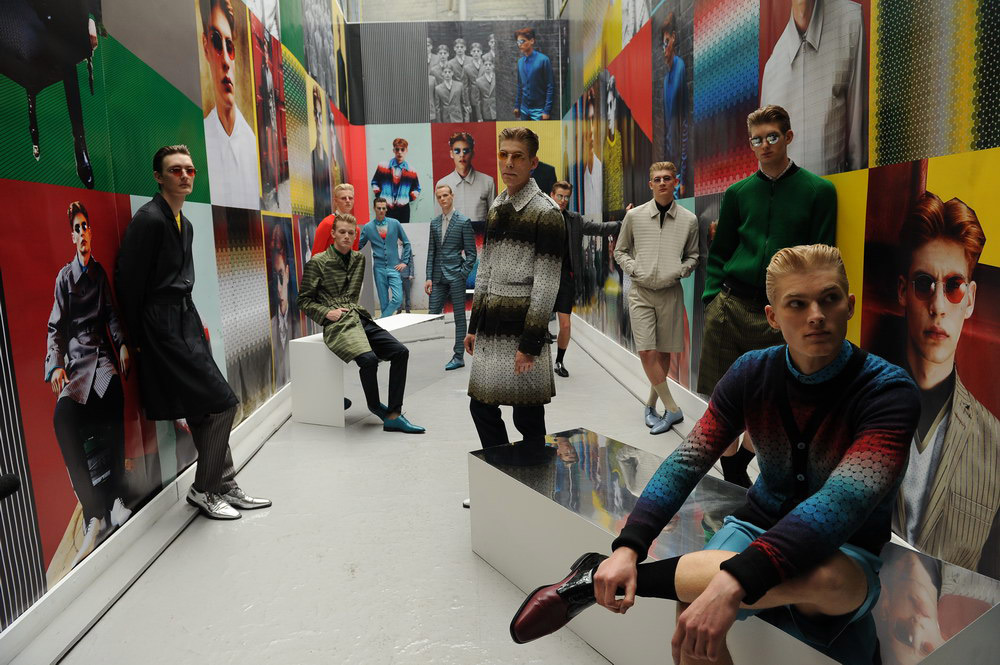Good evening,
I have a small question about the rule and common sense of going from a lighter color to a darker color. Example: white shirt, gray jacket, black coat.
It’s possible to do the opposite, right? And pull it off, too. That is to say, I’m not going to wear
a white coat with a gray jacket and a black shirt. But wearing a black shirt first then putting an attractive gray coat over the top, that could look nice, right?
Basically, doing the opposite isn’t specifically forbidden, is it? Going from the darkest to the lightest color without too much contrast between each color, that could be quite nice, as long as the execution is half-decent.
I think it would be interesting to explore this question, because I believe the answer is that it’s not forbidden. Lots of people do it, and the result isn’t half-bad.
Anyway, your posts are very interesting, and, most of all, detailed. Personally, I really like “Cordovan the masculine’s man leather“
Keep up the good work, and have a good evening.
Anthony
Beware of overthinking colors
Anthony,
Having read your email, two important points come to mind:
- When it comes to colors, beware of overthinking, an easy trap to fall into. I’m always surprised by how many questions we receive about coordinating colors, despite the fact that it’s one of the easiest aspects of style to master, and should be fairly intuitive. It’s much more productive to have a serious think about the balance of your wardrobe, and the look you want to work towards, rather than asking yourself if it’s possible to wear this shade with that one.
- If I read between the lines, I detect some anxiety over making a mistake. I’ll say it again: color coordination disasters are very rare. You really have to put colors together haphazardly on purpose in order to go wrong. In fact, coordinating colors is often the thing that my clients are best at before their makeover, as opposed to choosing clothes in the right cut or style for them. So don’t stress out about color – there’s really very little risk of getting it wrong.

Now to address the question itself. It’s definitely possible to wear a dark base and layer lighter colors on top, but it’s typically the kind of move that I advise against. It’s complicated to execute, and you can achieve a better result with less effort if you do the opposite (wear a light base and layer darker colors on top).
A few words on the black shirt
Someone recently sent me one as a gift, and, honestly, it’s a real pain to integrate into an outfit. Not only does black tend to make you look tired, but it’s also difficult to find a layer I can wear on top of the darned thing (apart from ablack jacket, obviously).
I intuitively reached for a gray jacket… but the effect is never as good as it is with a simple white shirt. Not to mention the surprising comments from friends: “Guys who wear a black shirt to a party make themselves look like trash”… Completely unexpected, and almost incomprehensible! I’ve come to the conclusion that wearing a black shirt is a lot of effort for a result that will never be excellent.
How should I wear black, then?
For those for still want to experiment with this color, these are my recommendations:
- Black tolerates cheap materials very badly, so choose a piece made from high-quality fabric, and wear it with other attractive items – that’s a must.
- Avoid wearing black with strongly contrasting colors: stick to neutral or subtle tones like midnight blue and charcoal gray.
It’s important to take your natural colorings into account when thinking about the lightness or darkness of the colors you wear, and the contrast between them. But, ultimately, it’s up to you to find out which colors really suit you.
-> More on this topic, click here: How men should wear black
If you want to wear black, here are some color combinations that work well:
- blue and gray
- beige and gray
- white and gray
- blue and mauve (in small doses)

Neutral colors vs. bold colors
Gill has some interesting things to add on the topic of color contrasts. Here’s what he said:
In general, 80% neutral colors and 20% bold colors is a ratio that will bring nice, light contrast to your outfit.
Of course, the inverse doesn’t hold true: 80% bold colors and 20% neutrals generally = catastrophe.
So, if you want to wear pink, for example, go ahead and wear a pink t-shirt, but the rest of your outfit must be based on neutral colors. It’s all about the right amount of contrast – and, of course, the end result depends enormously on the materials involved (Melinda Gloss S/ S ’13 lookbooks are a great illustration of this point).
Wearing predominantly dark colors with a few lighter ones = appropriate for fall/winter, given that the days are a bit gloomy, and you spend 80% of your time in the dark anyway…
Wearing predominantly light colors with a few darker ones = appropriate for spring/summer. Wearing multiple bold colors also has a place in the context of these seasons.
Seriously, why make life more complicated for yourself?
I have a question for you… If I were to open your closer, what is the color that I’ll find a lot?



I have a question for you… If I were to open your closer, what is the color that I’ll find a lot?
Most definitely red. It looks good on me so I have every clothing piece in red from overcoat to t-shirt. I don’t wear them all at once of course. Neutrals range from beiges to navy and a little black
Yep, and I’m quite sure you’re not the only one!
Hi Giuseppe,
Thanks for your comment. Try a few bolder colors once in a while, gray is the easiest way to go
I know, I know. I have other colors as well, such as brown and blue.
They seem to be the only good colors for pale skin and red hair.
I love beige too. 😀